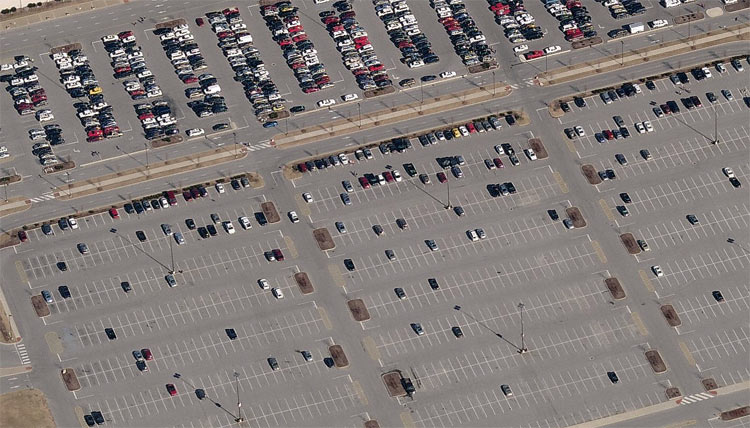The New York Times‘ new architecture critic Michael Kimmelman has been making waves with his coverage, not of the newest starchitect-designed showpieces, but of the critical urban issues that cities large and small are facing from public space to highway removal. Kimmelman recently tackled the problem of parking, which has been a big topic lately in Louisville.
According to the article, the U.S. is currently has anywhere from 105 million to 2 billion parking spaces. An exact number is difficult to gauge. Kimmelman says it’s time to confront these staggering numbers that cover the American landscape with countless square miles of asphalt. The renowned critic Lewis Mumford is invoked as having once said, “The right to have access to every building in the city by private motorcar in an age when everyone possesses such a vehicle is the right to destroy the city,” a note Louisville could certainly take to heart. Kimmelman argues that large cities must abandon codes regulating parking minimums instead opting for a market driven approach reinforced with parking maximums.
The Pensacola Parking Syndrome is a term of the trade used to describe a city that tears down its old buildings to create parking spaces to entice more people downtown, until people no longer want to go there because it has become an empty lot. Cities should let the free market handle the construction of new parking spaces. People who buy or rent new homes can pay extra if they want someplace to park a car. Municipalities can instead cap the maximum number of lots or the ratio of spaces to dwellings and offices.
Kimmelman said parking should be reconsidered in the larger realm of public infrastructure in cities rather than the overlooked remnants required to store cars. Lots can serve double duty by housing farmers markets and street parties that can reclaim some of the uniqueness lost to the ubiquity of the parking lot.
This is the idea behind Parking Day, a global event, around since 2005, that invites anybody and everybody to transform metered lots. Each year participants have adapted hundreds of them in dozens of countries, setting up temporary health clinics and bike-repair shops, having seminars and weddings.
Read the full article here.



I guess this is an example why true professionals planners should be selected for such important projects. Would not it be much more rational to build underground parking structures with rentable retail spaces on the ground floor? Take a look at the PATH, the underground shopping complex with hundreds of free parking lots in Toronto. From the street, you don’t even notice the parking garages.
Build parking lots that stop ruts, ponding, and uneven ground with a permeable base that reinforces the foundation like rebar. Rely on BaseCore™ as a cost-effective, eco-friendly commercial base.